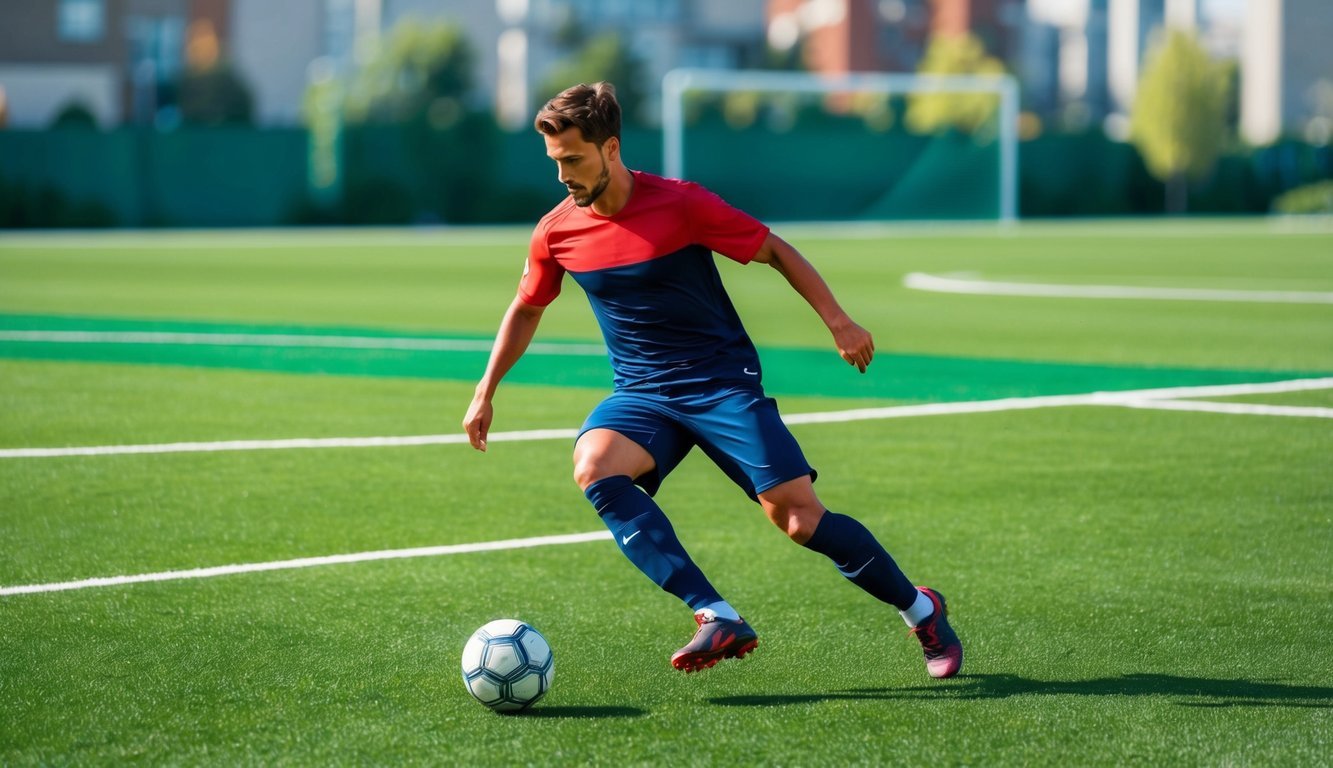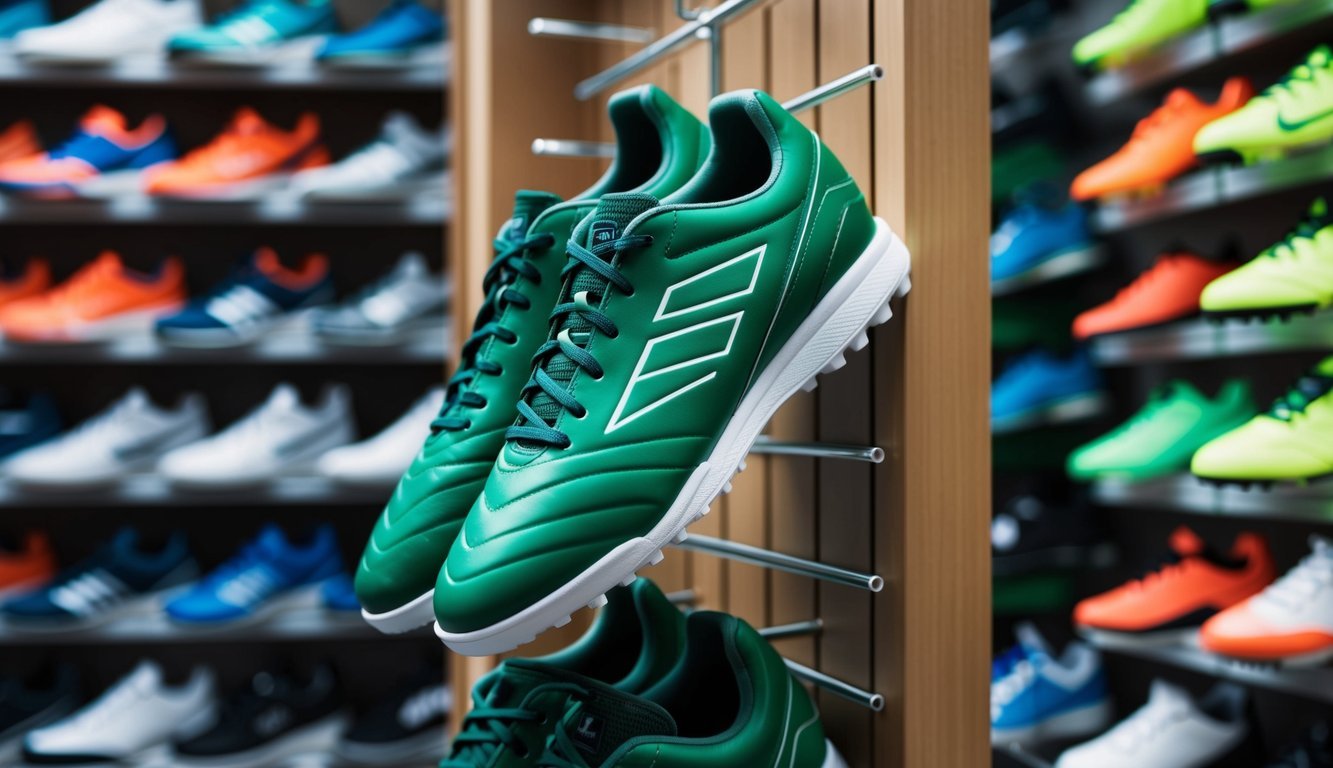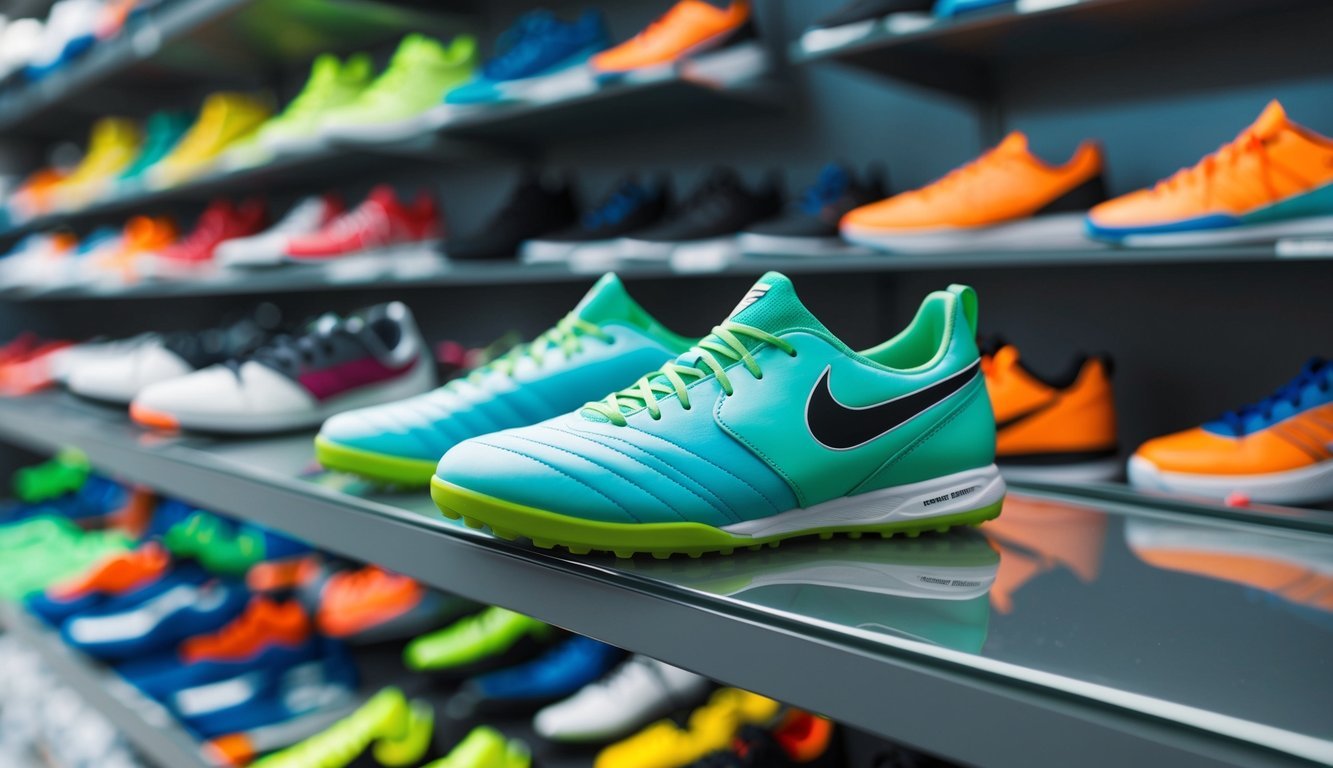Turf shoes are specialized footwear designed for baseball players who train or compete on artificial surfaces.
These shoes feature unique soles with short, rubberized studs or nubs that provide excellent traction on turf fields.
Turf shoes offer a perfect balance of grip, stability, and comfort for baseball activities on synthetic grass.
Baseball players often choose turf shoes for their versatility and performance benefits.
The shoes’ design allows for quick movements and sudden changes in direction without damaging the artificial playing surface.
This makes them ideal for practices, warm-ups, and games played on turf fields.
Comfort is a key advantage of turf shoes.
The shorter studs distribute weight more evenly across the foot, reducing pressure points and minimizing fatigue during extended periods of play.
Many players find turf shoes to be a comfortable alternative to traditional cleats, especially when transitioning between different types of playing surfaces.
Understanding Turf Shoes
Turf shoes are specialized footwear designed for optimal performance on artificial turf surfaces.
These versatile shoes blend comfort, traction, and durability to enhance athletic performance in various sports, especially baseball.
History and Evolution
Turf shoes emerged in the 1960s as artificial turf gained popularity in sports venues.
Initially developed for football, they quickly found their way into baseball and other field sports.
Early versions featured flat rubber soles with small nubs for traction.
As technology advanced, manufacturers incorporated new materials and designs.
The 1980s saw the introduction of more specialized turf shoes for different sports.
Baseball-specific turf shoes evolved to provide better lateral support and cushioning for quick movements on the diamond.
Today’s turf shoes feature advanced cushioning systems, breathable uppers, and specialized traction patterns.
They’ve become essential gear for players at all levels, from youth leagues to the pros.
Anatomy of Turf Shoes
Turf shoes consist of several key components:
- Upper: Usually made of lightweight, breathable materials like mesh or synthetic leather
- Midsole: Provides cushioning and support, often featuring foam or air technologies
- Outsole: The most distinctive part, with numerous small rubber studs or nubs
The outsole’s design is crucial for traction on artificial turf.
It typically features a pattern of small, densely packed rubber studs.
This configuration allows players to grip the surface without getting stuck or causing damage to the turf.
Many baseball turf shoes also incorporate reinforced toe boxes for durability during batting and fielding.
Some models include extra ankle support for quick lateral movements.
Turf vs Traditional Athletic Shoes
Turf shoes differ from regular athletic shoes and metal cleats in several ways:
| Feature | Turf Shoes | Traditional Athletic Shoes | Metal Cleats |
|---|---|---|---|
| Traction | Rubber studs | Flat or grooved soles | Long metal spikes |
| Surface | Artificial turf | Multi-purpose | Natural grass |
| Comfort | High | High | Lower |
| Durability | High on turf | Varies | Low on hard surfaces |
Turf shoes offer a balance between traction and comfort.
They provide better grip than regular tennis shoes on artificial surfaces, but won’t damage turf like metal cleats.
This makes them ideal for practice sessions, pre-game warmups, and games on artificial turf fields.
For baseball players, turf shoes are versatile enough to wear in batting cages, during conditioning workouts, and for general training.
They’re also more comfortable for extended wear compared to cleats.
Advantages of Wearing Turf Shoes

Turf shoes offer baseball players several key benefits on and off the field.
They provide excellent traction, support foot health, and help prevent injuries during play and practice.
Enhanced Traction and Stability
Turf shoes feature specialized soles designed to grip artificial surfaces.
The small, numerous rubber cleats or nubs on the outsole dig into turf, giving players sure footing as they run, pivot, and change direction.
This enhanced traction allows for quick starts and stops without slipping.
On natural grass, turf shoes still perform well.
The evenly distributed cleats provide stability across various field conditions.
Players can confidently make sharp cuts and sudden movements without fear of losing their footing.
For batting practice in cages or on artificial surfaces, turf shoes shine.
The grippy soles let batters dig in and maintain a solid stance throughout their swing.
Comfort and Support for Foot Health
Unlike traditional cleats, turf shoes have more cushioning and flexibility.
The softer soles reduce impact on joints when running or jumping.
This added comfort is especially beneficial during long practices or tournaments.
Many turf shoe models feature supportive midsoles that cradle the foot.
This helps distribute weight evenly and reduces strain on the arches.
Players with flat feet or high arches often find turf shoes more accommodating than rigid cleats.
The breathable uppers of turf shoes help keep feet cool and dry.
This can prevent blisters and fungal infections that sometimes plague athletes in less ventilated footwear.
Injury Prevention and Safety
The shorter cleats on turf shoes are less likely to get caught in the ground compared to longer baseball cleats.
This reduces the risk of ankle and knee injuries from sudden stops or twists.
On hard surfaces like gym floors or concrete, turf shoes are much safer than metal or molded cleats.
Players can easily transition from field to indoor workouts without changing shoes.
For young players still developing proper running and fielding techniques, turf shoes provide a forgiving platform.
The increased stability can help build confidence in movement skills without the added challenge of adapting to traditional cleats.
Choosing the Right Turf Shoes
Selecting the perfect turf shoes can enhance your performance and comfort on the field.
The right pair depends on your sport, playing surface, and individual needs.
Factors to Consider
When shopping for turf shoes, look at the outsole pattern.
Shoes with small, numerous studs provide excellent traction on artificial turf.
The upper material matters too – synthetic leather offers durability, while mesh increases breathability.
Consider the level of cushioning you need.
More cushioning can help absorb impact, especially on harder surfaces.
Some players prefer a firmer feel for better ground contact and responsiveness.
Weight is another key factor.
Lighter shoes can improve speed and agility, but may sacrifice some durability.
Heavier options often provide more stability and support.
Turf Shoes for Different Sports
Baseball turf shoes typically have a lower profile and flatter outsole.
This design aids quick lateral movements and provides stability when batting or fielding.
Additionally, the lightweight construction of baseball turf shoes enhances players’ speed and agility on the field.
To further improve performance, athletes often pair their footwear with baseball sunglasses for optimal visibility, which protect their eyes from harsh sunlight while allowing them to track the ball with precision.
Together, these elements contribute to a player’s overall effectiveness and comfort during games and practices.
For softball, look for shoes with slightly longer studs to grip softer turf fields.
Many softball turf shoes also offer extra ankle support for quick directional changes.
Soccer turf shoes feature a pattern of small, dense studs across the entire outsole.
This design allows for better ball control and quick turns on artificial grass.
Getting the Perfect Fit
Try on turf shoes later in the day when feet are slightly swollen.
Wear the socks you’ll use during play to ensure an accurate fit.
Leave about a thumb’s width of space between your longest toe and the shoe’s end.
The heel should fit snugly without slipping.
Walk and jog in the shoes.
They should feel comfortable immediately, with no pinching or rubbing.
Flex your foot to check for proper bend at the ball of the foot.
Different brands may fit differently, so don’t hesitate to try multiple sizes or styles to find your ideal match.
Maximizing Performance

Turf shoes can significantly enhance a player’s abilities on artificial surfaces.
When used effectively, they provide the traction and stability needed to excel in various aspects of baseball.
Training Tips with Turf Shoes
Start by incorporating lateral movements into your practice routine.
Quick side-to-side drills help build agility and test the grip of your turf shoes.
Focus on explosive starts and stops to improve acceleration.
The nubs on turf shoes offer excellent traction for these exercises.
Include plyometric exercises like box jumps and bounding.
These movements strengthen leg muscles and improve power, utilizing the shoe’s responsive sole.
Practice fielding drills on turf to get comfortable with the surface.
Work on your first step and directional changes to take full advantage of the shoe’s design.
Game Day Uses
During pre-game warm-ups, use your turf shoes for dynamic stretching and light jogging.
This helps activate muscles and acclimate to the field conditions.
For batting practice, turf shoes provide a stable base.
Focus on transferring power from your legs through your swing, leveraging the shoe’s grip.
When playing defense, trust your turf shoes’ traction for quick reactions.
Practice reading the ball off the bat and making swift movements to improve your range.
Base runners can benefit from the shoe’s grip during leads and stolen base attempts.
Work on explosive first steps to maximize your speed on the basepaths.
Caring for Your Turf Shoes

Proper care and maintenance of turf shoes can significantly extend their lifespan and keep them performing at their best on the field.
Regular cleaning and smart storage practices go a long way in preserving these specialized baseball shoes.
Maintenance and Cleaning
After each use, brush off any loose dirt or grass from your turf shoes.
For tougher stains, use a soft brush and mild soap with warm water.
Gently scrub the shoes, paying extra attention to the rubber nubs on the soles.
Rinse thoroughly and let them air dry away from direct heat or sunlight.
For stubborn odors, try sprinkling baking soda inside the shoes and leaving it overnight.
Shake out the powder in the morning.
This simple trick can work wonders for freshness.
Don’t forget to check the laces regularly.
Replace them if they show signs of fraying to prevent unexpected breakage during a game.
Longevity and Replacement
A good pair of turf shoes can last 1-2 seasons of regular use with proper care.
Keep an eye on the rubber nubs on the soles.
When they start to wear down significantly, it’s time to consider a replacement.
If possible, rotate between two pairs of turf shoes.
This allows each pair to fully dry out between uses, reducing the risk of bacterial growth and extending their life.
Store your turf shoes in a cool, dry place when not in use.
Avoid leaving them in hot cars or damp gym bags, as this can lead to premature breakdown of materials.
Replace your turf shoes if you notice a decrease in grip or stability on the field.
Worn-out shoes can increase the risk of slips and injuries, especially on artificial turf.
